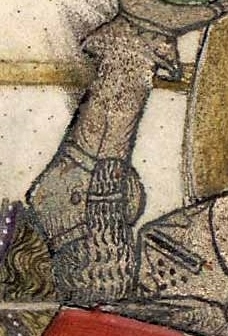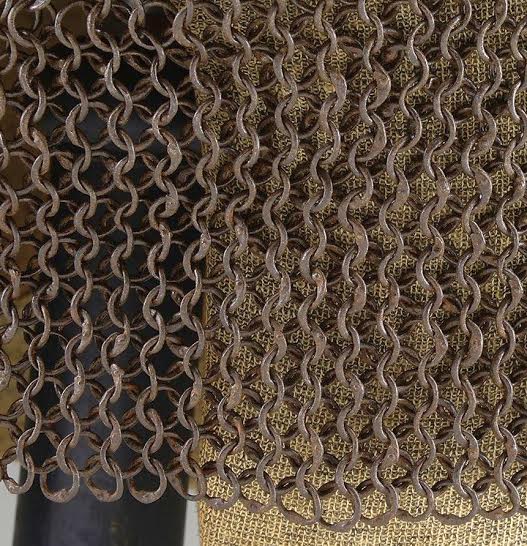| Mart Shearer wrote: | ||||
The Hermann Historica description:
I'm unsure if I trust the 15th century dating without some artistic example of similar sleeves. The whole issue of how much fully riveted mail displaced the demi-riveted in Europe generally, or Germany in particular is not well understood. |
I have proposed on Armour Archive that the Hermann Historica shirt is being displayed backwards. We know the Indian collar is a later addition, and I think they put the slit to the back. This means the sleeve extensions cover the inner elbow.
http://forums.armourarchive.org/phpBB3/viewto...1#p2695671
| Quote: |
| I'm beginning to wonder if the Hermann Historica shirt isn't being displayed backwards. We know the Indian collar is a later addition, and without it the neck opening is very high without a slit. So I'm thinking this is the back we're being shown, and the sleeve extensions or steps belong on the front.
Compare this example from BNF Français 343 Queste del Saint Graal / Tristan de Léonois fo. 17 verso. http://manuscriptminiatures.com/4317/7113/ [ Linked Image ] [attachment=0]BNF Français 343 fo.17v.jpg[/attachment] The mail on the upper arm is tight fitting, but continues into the inner elbow. This is exactly what the Hermann Historica example would do if turned around. No need to have much mail below the vambraces, allowing for a tighter fit. Opposing opinions? |

